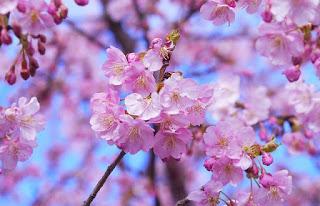
Known popularly as the Japan Rhine, Inuyama is a beautiful destination in southern Gifu-ken where images of crystal clear rivers and magnificent castles are placed in the background. At night, the fishermen come out and practice ukai, adding even more charm and appeal to an area known for its tranquillity and loveliness.
Inuyama-jo:
Dating as far back as 1440, Inuyama-jo is a magnificent castle which is the oldest in the country. The main keep, known as donjon, is just over a century younger than the exterior but has managed to survive against wars, earthquakes and restoration, coming out of the long centuries to be a magnificent example of architecture from the Momoyama period. You can visit this beautiful castle and wander around, taking in the amazing atmosphere.
Karakuri Exhibition Room:
Just a short walk south of the castle you will discover the Karakuri Exhibition Room (also known as the Marionette Exhibition Room) where you gaze in wonder at the skilled craftsmanship of the puppets produced during the Edo and Meiji periods. The skilled puppeteer Shobei Tamaya holds brilliant performances with these beautiful puppets at 10.30am and 2pm each Saturday.
Artefacts Museum:
The Artefacts Museum is located just across the road from the Karakuri Exhibition Room whose highlight is a magnificent ornate float which was used during the Inuyama Festival. This festival was first held in 1650, always performed on the first weekend in April, where 13 three storey floats are decorated with lit lanterns and karakuri, performing to music.
Admission to both the Karakuri Exhibition Room and the Artefacts Museum is included in the ticket to Inuyama-jo.
Uraku-En and Jo-and Teahouse:
Uraku-en is a beautiful garden in which to linger and take in the charming atmosphere of the town, although you will have to forgo your shoes and don open toed sandals. Jo-An Teahouse is considered one of the best teahouses in the country, founded by 1618 by Oda Urakusai, the younger brother of Oda Nobunaga. Visitors are allowed a glimpse into the teahouse but not actually allowed to step foot inside apart from four days each in March and November.
Ukai:
You can indulge in a spot of ukai in this beautiful little town. Boats depart from the cormorant fishing pier at 5.30pm from June to August when the shows start at 7.45pm. In September, boats leave the pier at 5pm which the start of the show kicking off at 7.15pm.
Meiji-muri Museum:
This striking open aired museum has managed to survive against all odds – from wars and earthquakes to restoration projects. You will need to set aside a full day here to wander around the public offices, homes, banks, trains and buses, bringing all the calamities Japan has faced together.
Ogata-jinja:
If you love to explore religious buildings on holiday, you should pay a visit to the 2000 year old shrine Ogata-jinja. It is dedicated to the Shinto goddess Izanami and attracts thousands of women here who ask for marriage and increased fertility.
Tagata-jinja:
As the male other half of Izanami, this shrine is dedicated to the Shinto god Izanagi. One part of the shrine you should visit is a building to the side of the main hall – it features a large collection of phalluses which were left by worshippers as offerings.
Festivals:
One of the best times to come to Inuyana is in the first week of April when the colourful Inuyama Festival is held. In addition to this, the Nihon Rhine Festival is also performed here on the 10th August where a magnificent display of fireworks is held.
Hiking
Inuyama has some wonderful hiking trails for visitors to enjoy, especially around Tsugao-san. Commence your hike at the base of Inuyama-jo and head east. Passing Monkey Park and then onto Jakko Temple, and enjoy the stunning vistas of the foothills which run all the way past Kiso-gawa. There is the option to climb Tsugao-san or carry on until Zenjino station which will take you back to Inuyama.
One of Japan islands is not to be found
One of the small islands of Japan, called Esanbe Hanakita Kojima and uninhabited, has disappeared, and experts say it was eroded by winds and ice that are formed annually in the Ohotsk Sea during the winter, according to globalnews.ca .
The island's disappearance has not been noticed by the inhabitants of Sarufutsu, a village only 500 meters away, on the larger island of Hokkaido.
Esanbe was one of the 158 uninhabited islands named in 2014 by the Japanese government, who wanted to clarify its borders, given China's disputes over the Senokaku (Diaoyu) islands.
Esanbe Hanakita Kojima is located in the Northern Territories, the subject of another famous dispute - the Kula islands - with Russia. The islands were confiscated by the Soviets a few days after the end of the Pacific War.
Local residents were alerted to the island's disappearance in September after writer Hiroshi Shimizu visited Sarufutsu to write a volume about Japan's "hidden islands". He announced the association of fishermen in the area who had searched for the island without success.
Older fishermen say they saw the island many decades ago, but they avoided it because the navigation systems mistakenly showed that the area was part of a reef.
The coast guard indicated that the most recent island was monitored in 1987 and was then only 1.4 meters tall. Authorities have to study the area to find out what was the fate of the island, and if it disappeared completely, Japan's territorial waters will be reduced by half a kilometer.
